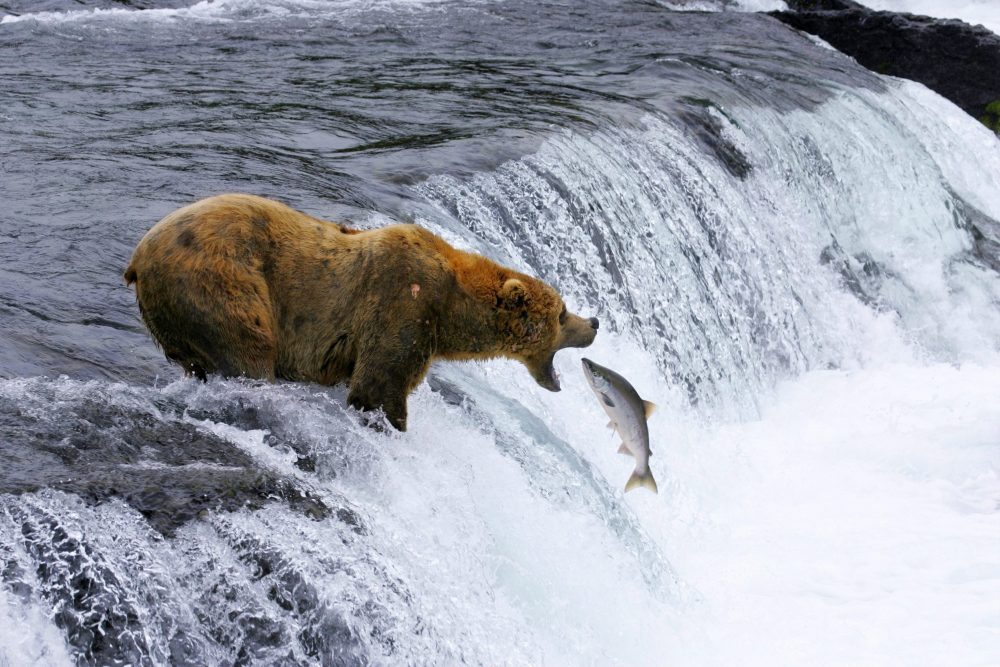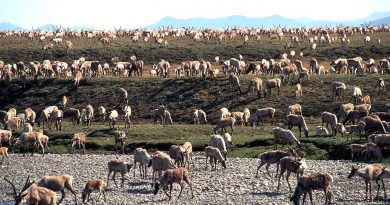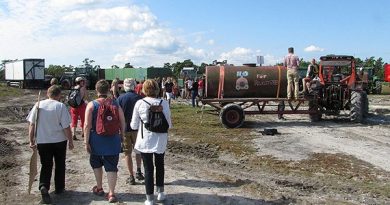The Katmai bear cam is back

Explore.org is once again live streaming brown bears as they fish for salmon at Katmai National Park and Preserve.
Looking for your nature fix? The Katmai bear cam has you covered.
Explore.org has once again partnered with Alaska’s Katmai National Park and Preserve, providing live streaming footage throughout the summer of the park’s most famous residents, its bears.
Now in its fifth year, the bear cam spotlights the creatures as they fish for salmon. Nearly 1,500 people were live streaming from one of the cameras Friday afternoon.
“It tends to be the most popular cam at Explore,” said Zach Servideo of Fabric.Media, which works with Explore, in a recent interview. “It’s pretty insane. There are already 60,000 comments and we can have hundreds of thousands of viewers in a matter of hours.”
All season? “Oh, man, several million hits.”
[Katmai bear cam captures pair of mysterious deaths]
Move aside polar bears and beluga whales
That puts the Brooks bears at the top of the list of Explore’s most popular critter cams. Ahead of the renowned polar bears at Churchill, Manitoba. Ahead of beluga whales in Hudson Bay. Ahead of sharks near Cape Fear, North Carolina. Ahead of puffin cams, osprey cams, eagle cams.
“And the bird community is insane,” Servideo said.
Katmai, located on the Alaska Peninsula, is known for hosting a high concentration of brown bears that take advantage of spawning salmon.
Brooks Falls is considered one of the best places in the world to view brown bears, according to the Katmai National Park website, as it’s one of the first places where bears have access to the salmon migrating upstream come summer.
30 fish a day
Brooks Falls creates a temporary barrier to migrating salmon early on in the salmon run, which creates a successful fishing spot for the bears.
That’s important: A large, dominant male brown bear can eat more than 30 fish a day, according to the park.
“The brown bears of Katmai are eating machines. A Katmai bear must eat a full year’s worth of food in 6 months to ensure its survival,” the website says.
Bears will abandon the spot later in the summer, once the fish stop moving upstream in large numbers.
[In wildlife rarity, ‘supermom’ grizzly sow adopts yearling in Katmai]
Unique personalities
The best viewing for the bear cams is through the end of July, and then early September through mid-October.
“What it does, which I think is unique, is it gets access to a remote place, which many people wouldn’t be able to afford a trip to,” Troy Hamon, chief of management and science at Katmai National Park, told Alaska Dispatch News two years ago.
“National parks in Alaska are pretty amazing, but to a certain extent, unless you are a local rural resident, it becomes a park for the rich.”
Some viewers spend hours on end tracking the Brooks bears, which have individual personalities. Lurch is a bully. Tundra has a unique coat. Bald Butt was missing hair. Holly adopted an abandoned cub.
Multiple views are set up to watch the bears through Explore.org. Explore.org is a philanthropic media organization and a multimedia division of the Annenberg Foundation that supports educational and nature programs.
On Explore.org’s website, more than 100 live streaming webcams are available for every wildlife fix you’ll ever need, including walrus lounging on the beach at Alaska’s Round Island.
Laurel Andrews
Laurel was born in Bethel and grew up playing in the woods in Fairbanks. She has worked as a reporter since June 2012.
Mike Campbell
In 37 years as a journalist in Alaska, Mike has been an editor and reporter, including a stint as assistant managing editor of the Anchorage Daily News. He was part of a team that won the 1989 Pulitzer Prize public service award.



